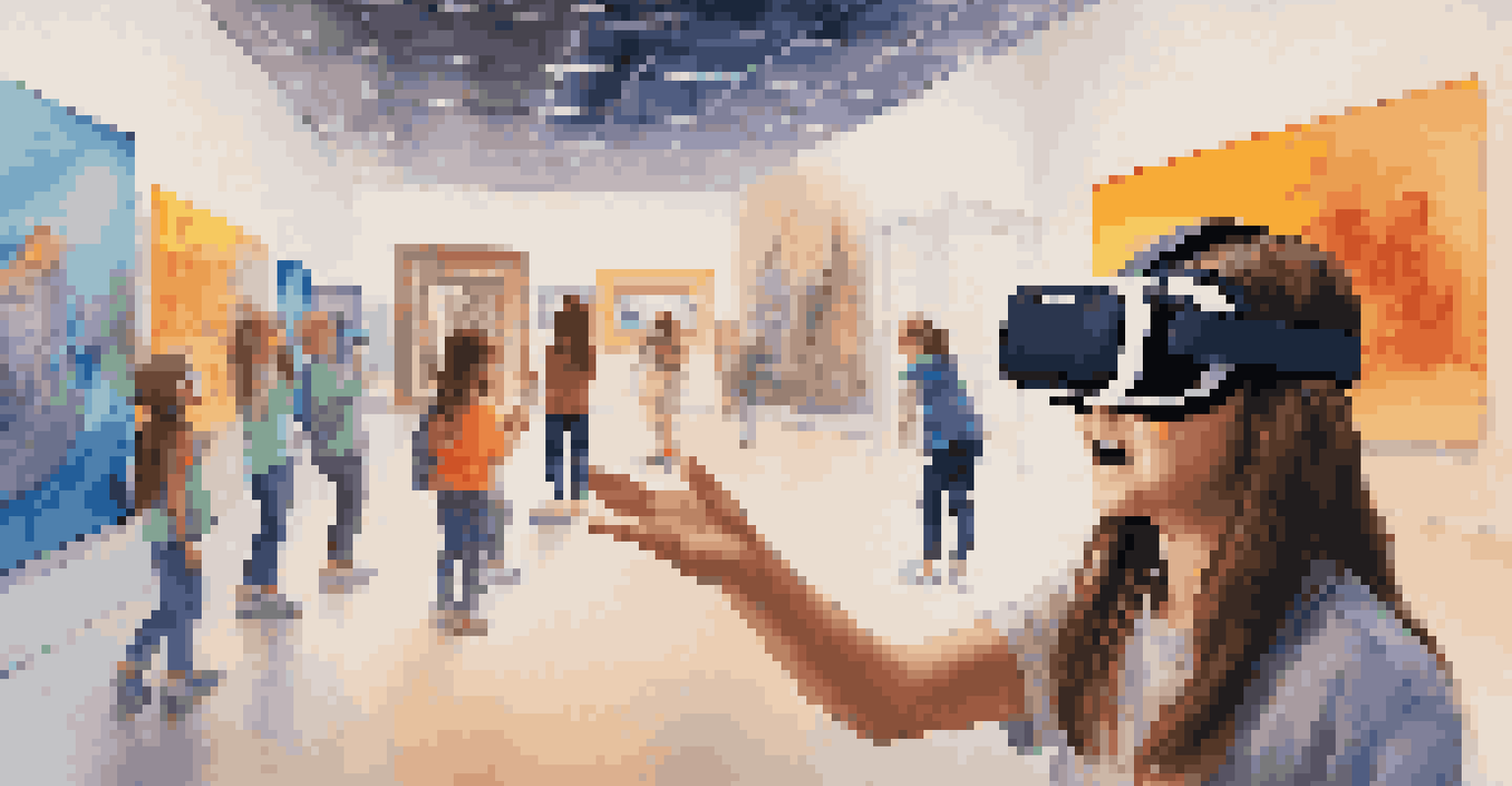Educational Tours: Blending Fun with Learning

Understanding the Concept of Educational Tours
Educational tours are structured trips designed to offer learning experiences outside the classroom. They blend the excitement of travel with the educational elements of museums, historical sites, and cultural landmarks. For instance, a visit to the Smithsonian can spark interest in science and history while providing firsthand experiences of artifacts.
The best education is not given to students; it is drawn out of them.
These tours often cater to various age groups, making them suitable for students, families, and even corporate teams. By stepping outside their usual environment, participants can gain new perspectives and insights that traditional classroom settings might not provide. This kind of immersive learning can be particularly impactful, as it engages multiple senses and fosters a deeper understanding.
Additionally, educational tours encourage curiosity and exploration. When students engage with real-world settings, they are more likely to ask questions and seek knowledge, paving the way for lifelong learning. The blend of fun and education creates memorable experiences that resonate long after the trip ends.
Benefits of Educational Tours for Students
One of the primary benefits of educational tours is that they enhance student engagement. When students participate in hands-on learning experiences, they often become more invested in the subject matter. For example, learning about marine biology during a field trip to an aquarium can ignite a passion for conservation and environmental studies.

Moreover, these tours help develop critical thinking and problem-solving skills. As students encounter real-world scenarios, they learn to analyze situations, ask questions, and draw conclusions based on their observations. This practical application of knowledge not only solidifies their understanding but also prepares them for future challenges.
Educational Tours Enhance Learning
These structured trips provide immersive experiences that engage students beyond traditional classroom settings.
Lastly, educational tours foster social skills and teamwork. Many activities on these trips require collaboration and communication, helping students build friendships and learn to work effectively with peers. The shared experiences can create lasting bonds and enrich their educational journey.
Choosing the Right Educational Tour for Your Needs
Selecting the right educational tour involves considering the interests and educational goals of the participants. Whether it's a science-focused trip to a national park or a historical tour of ancient ruins, the options are vast. It's essential to align the tour's content with the subjects being taught in the classroom to maximize learning outcomes.
Learning is a treasure that will follow its owner everywhere.
Another factor to consider is the age group of the participants. Different tours cater to different levels of understanding and engagement. For younger students, hands-on activities and interactive exhibits might be more effective, while older students may benefit from more in-depth discussions and analyses of complex topics.
Lastly, consider the logistics of the tour, including budget, duration, and location. Planning ahead and researching various options can ensure a smooth and enriching experience. By carefully selecting the right tour, you can create an impactful learning adventure that resonates with all participants.
Incorporating Educational Tours into Curriculum
Incorporating educational tours into the curriculum can enhance the overall learning experience for students. Educators can align tours with specific learning objectives, making the trips an extension of classroom lessons. For example, a history teacher might coordinate a visit to a battle site to deepen students' understanding of historical events.
Additionally, pre- and post-tour activities can be implemented to reinforce learning. Teachers can prepare students with background information and expectations before the trip, followed by discussions or projects afterwards to reflect on what they learned. This approach solidifies the connection between the tour and academic content.
Technology Enriches Tour Experience
Tools like mobile apps and virtual reality enhance the educational impact of tours while simplifying planning and organization.
Furthermore, collaboration with other educators can create interdisciplinary experiences. By joining forces with colleagues from different subjects, schools can organize comprehensive tours that incorporate various themes, such as art, science, and history, providing a richer educational experience.
The Role of Technology in Educational Tours
Technology plays a significant role in enhancing the educational tour experience. Mobile apps and virtual reality tools can provide interactive guides and additional information during the tour. For example, a virtual reality headset can transport students to historical events, enriching their understanding of the past in a way that textbooks cannot.
Moreover, technology allows for easier planning and organization of educational tours. Online platforms can help educators find suitable tours, compare options, and even book accommodations and transportation. This convenience enables teachers to focus more on the learning aspects rather than getting bogged down by logistics.
Lastly, technology can facilitate post-tour engagement. Students can use digital tools to create presentations, blogs, or videos reflecting on their experiences. This not only fosters creativity but also allows for sharing their newfound knowledge with others, further reinforcing their learning.
Making Educational Tours Accessible for All
Accessibility is a crucial consideration when planning educational tours. It's important to ensure that all students, regardless of their physical abilities or financial situations, can participate in these enriching experiences. Schools and organizations can work together to provide scholarships or funding to assist families who may struggle with costs.
Additionally, choosing venues that are wheelchair accessible and accommodating to various needs is essential. This can involve researching locations ahead of time and communicating with venue staff to ensure that all participants can enjoy the experience fully. Inclusivity fosters a sense of belonging and encourages diverse perspectives in learning.
Accessibility is Key for Participation
Ensuring all students can join educational tours fosters inclusivity and enriches the learning experience for everyone.
Furthermore, involving students in the planning process can empower them and create a sense of ownership over their educational experiences. By considering their interests and needs, educators can design tours that are engaging and accessible for everyone, ensuring that no student is left behind.
The Future of Educational Tours in Learning
The future of educational tours looks promising, especially as more schools recognize their value in enhancing learning. With advancements in technology and a growing emphasis on experiential learning, educational tours will likely become even more integrated into curricula. As educators continue to seek innovative ways to engage students, these tours will evolve to meet the changing landscape of education.
Moreover, the rise of sustainable tourism is likely to influence the types of educational tours offered. Schools may increasingly prioritize eco-friendly options that teach students about conservation and responsible travel. By aligning educational tours with sustainability goals, educators can instill a sense of global citizenship in students.

Ultimately, the continued success of educational tours will depend on collaboration among educators, tour operators, and communities. By working together, they can create enriching experiences that not only educate but also inspire students to become lifelong learners.